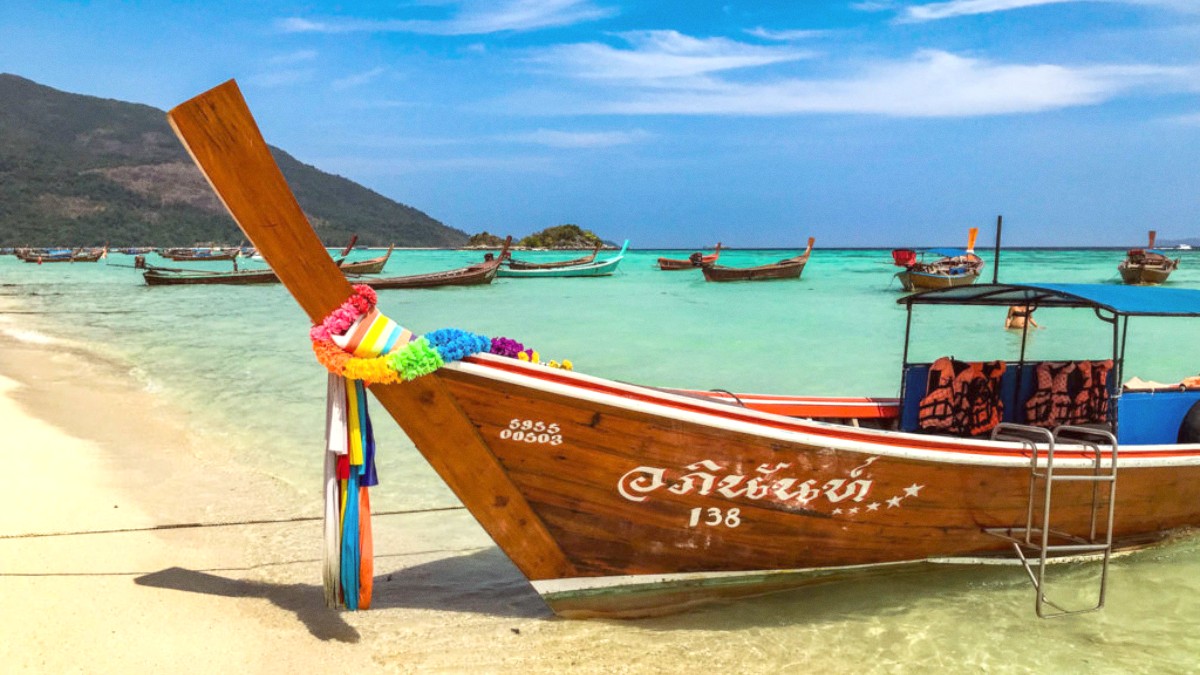
Andaman Coast, Thailand
Ko Lipe features a tropical monsoon climate. This weather means warm temperatures year-round and distinct wet and dry seasons. High season (November to April) generally brings sunny and calm weather. Low season (May to October) brings more frequent rain, higher humidity, and rougher seas.
Temperatures remain consistent around 30-32°C (86-90°F) throughout the year, with humidity varying by season.
Monsoon rains impact travel. Ferry cancellations or delays are more likely, specifically for routes from Pak Bara. Rougher seas affect boat trips and visibility for water activities.
Fewer tourists create a peaceful atmosphere. Lower prices for accommodation become available.
Nov - Apr
Ideal weather, calm seas.
Crowded, highest prices.
Early Nov, May
Fewer crowds, better value.
Risk of early/late rain.
Jun - Oct
Quiet, lowest prices.
Monsoon rains, limited services.
Snorkeling and diving offer best visibility and calm seas from November to April. This period offers the clearest underwater views.
Island hopping tours are smooth and pleasant with calm seas during November to April. This makes boat travel between islands comfortable and efficient.
The low season presents dramatic cloud formations and lush greenery.
The low season offers deserted beaches, but rain can interrupt sunbathing.
Late November or early May often provide good weather, fewer crowds, and better prices.
Entry rules depend on nationality and stay duration. These rules apply to your visit.
Citizens of many countries can enter Thailand without a visa for short stays. Other options exist for specific nationalities or longer visits.
A valid passport and proof of onward travel are standard. Be ready to present supporting documents.
Ko Lipe offers options for various budgets, from backpacker-friendly to luxury experiences.
No specific vaccinations are generally required for entry to Thailand from most countries.
Routine immunizations, Hepatitis A & B, and Typhoid are widely recommended. Consider Japanese Encephalitis for extended rural stays.
Rabies is for those with animal contact or cave exploration.
Food hygiene in established restaurants and popular street food stalls is generally good.
This is due to high turnover and fresh cooking practices.
Tap water on Ko Lipe is not safe for drinking. Always consume Bottled water or water from sealed dispensers.
Many resorts and restaurants offer water refill stations to reduce plastic waste.
The island has a small local clinic and a few pharmacies on Walking Street for basic medical needs.
For serious emergencies, transport by speedboat to the mainland is necessary, then to a hospital in Satun or Hat Yai. This can take several hours.
Hat Yai has large, modern hospitals (e.g., Hat Yai Hospital) providing advanced medical care.
Keep these numbers accessible for urgent situations during your visit.
Awareness and simple measures prevent common travel ailments in the tropics.
Drink bottled water, eat hot, freshly cooked food. Wash hands frequently or use sanitizer.
Use high SPF Reef-safe sunscreen, wear hats, and stay hydrated. Seek shade during peak sun hours.
Use Mosquito repellent (DEET/Picaridin). Wear long sleeves/pants at dawn and dusk.